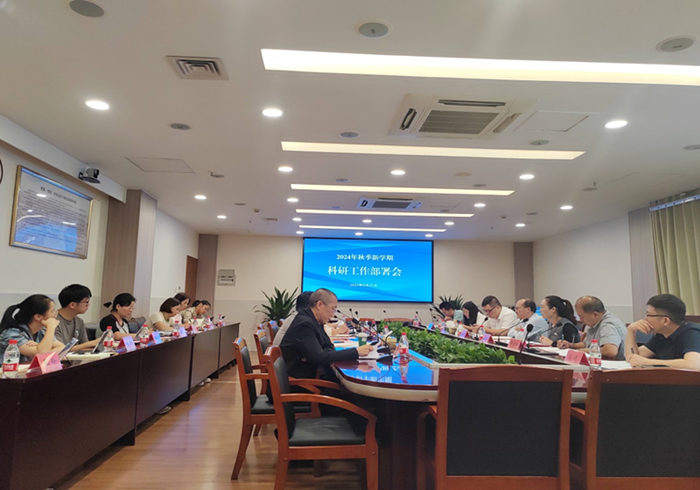On the morning of September 25th, TU held a meeting for scientific research work in the autumn semester at the First Conference Room of Jiaojiang Campus. Vice President Han Deman was present at the meeting and delivered a speech. The meeting was attended by deputy heads in charge of scientific research from various secondary schools, directors of scientific research from affiliated hospitals, and scientific research secretaries from each school. It was chaired by Jin Yanxian, Director of the Science and Technology Department.
The meeting studied the documents on teacher ethics and style education, reviewed the university’s scientific research work in the first half of 2024, and focused on a comprehensive summary of the fulfillment of scientific research indicators in the first half of 2024 in each secondary school. The discussion centered around restrictive indicators such as provincial platform and award applications, national project establishment, research fund arrivals, and achievement transformation. Representatives shared the current status of the quantitative assessment of scientific research work in their respective schools, discussed existing problems, and exchanged ideas and strategies, contributing to the development of the university’s scientific research work.
Subsequently, the Science and Technology Department reported on the “Scheme for Optimizing the Secondary Management of Annual Scientific Research Achievement Registration” and deployed the key work for the second half of 2024. The meeting emphasized that each secondary school should closely monitor the assessment indicators, analyze the reasons, clarify the direction, implement precise measures, and promote scientific research work in the second half of the year.
Han Deman affirmed the achievements of the scientific research work in the engineering and science secondary schools in the first half of the year and put forward specific requirements for it in the second half of the year: First, adhere to academic integrity and foster a good academic environment. Research integrity is the cornerstone of scientific and technological innovation. The Science and Technology Department should strengthen the construction of research integrity, collaborate with secondary schools to publicize research integrity policies, adhere to academic integrity, eradicate misconduct such as plagiarism and fabrication, and contribute to academic development with a rigorous attitude and solid research. Second, it is necessary to strengthen secondary management and improve the level of science and technology management services. The Science and Technology Department should comprehensively comb the current blockages and risk points in scientific research management, deeply consider how to enhance inter-departmental and university-school collaboration to improve the effectiveness of science and technology management. The department should also control system management, enhance supervision and management responsibilities, and comprehensively improve the service awareness and level of science and technology management personnel at both the university and school levels. Third, enhance the awareness of quality and focus on cultivating landmark achievements. As the university has entered a new stage of the three-step development strategy, each secondary school should always maintain the awareness of producing high-quality research outcomes and ensure that the pursuit of landmark achievements is consistently integrated into the annual scientific research work. In particular, in terms of high-level awards and platform development, secondary schools should strengthen planning and develop three-year application plans to strive for new breakthroughs in landmark achievements. Fourth, innovate management models and deeply implement organized scientific research. The Science and Technology Department should consider how to promote team building from the perspective of innovative management models, facilitate interdisciplinary collaboration, achieve large-team synergy, thus promoting organized scientific research, and making contributions to the development of the university’s scientific research and overall strength.

Meeting for scientific research work